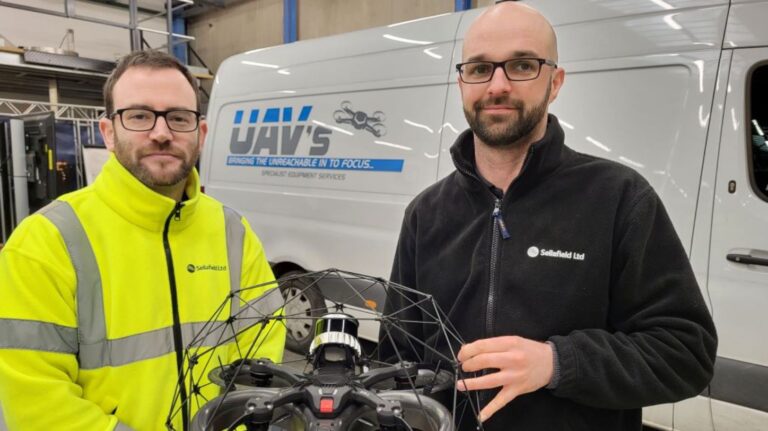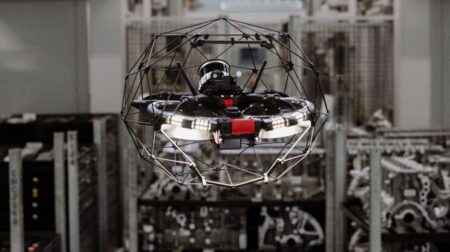Sellafield Ltd, a wholly owned subsidiary of the Nuclear Decommissioning Authority (NDA), has completed two drone flights at its Sellafield site, which it hopes will lead to increased safety during future decommissioning procedures.
The NDA is a non-departmental public body sponsored by the UK government.
An Elios 3 drone was deployed for the first flight; the uncrewed aerial vehicle (UAV) was fitted with lidar and was used to map and create a 3D model of the facility.
Read more: How inspection robots are being deployed to cut costs and reduce human exposure to risk
On the second flight, the team then flew the Elios 3 drone with a RAD (radiation activity detection) dosimeter, which they hope to use to map radiation hotspots before other colleagues enter these areas.
Staff at the facility are currently working on creating the optimal route for future flights of the drone.
Sam Jay, UAV equipment engineer and chief pilot, Sellafield Ltd said: “The flights can be very intense and in this case there was pipework everywhere. The drones fly in a cage with sensors so if they do happen to touch anything they won’t be damaged.”
Jay explained that one of the trickiest aspects of operating a UAV is “remembering your way out again…[in] such a short space of time you need to get in and out quickly”. This means “there can be a lot of pressure as not getting the drone out and having to send someone in after it would defeat the point of the flight”.
He added: “Now that we have scanned the area the engineers can design scaffolding before they go to unblock a pipe which has been causing an issue in this particular area. By deploying the drone, and speeding up the process we have potentially saved the company, and the taxpayer, hundreds of thousands of pounds.”
Sellafield recently made history as the first UK nuclear site to employ a drone equipped with a radiation monitor.









